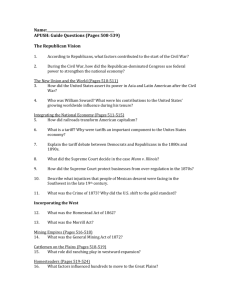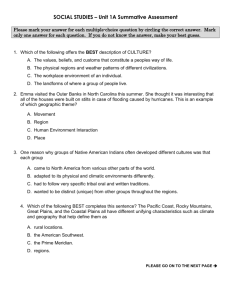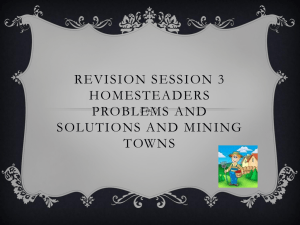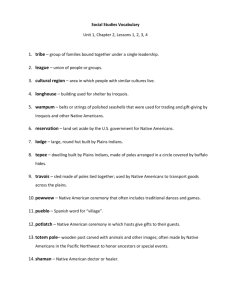Homesteaders Farming the Great Plains
advertisement
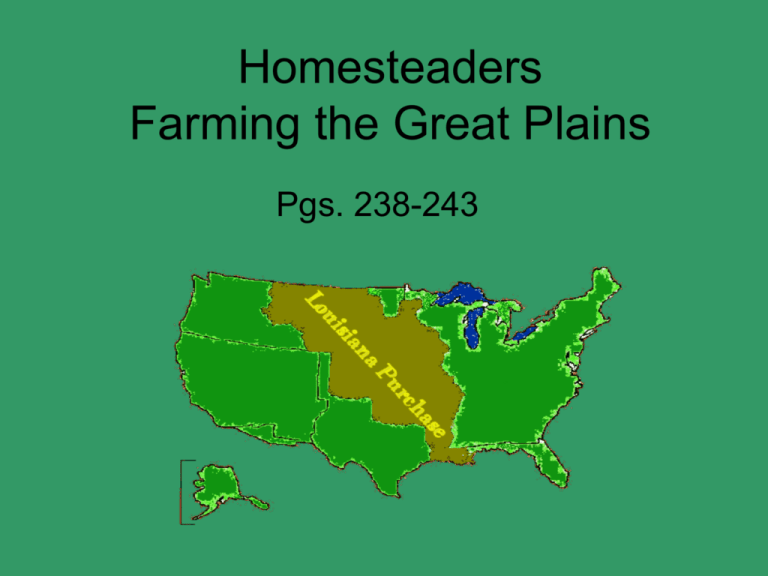
Homesteaders Farming the Great Plains Pgs. 238-243 Settling the Plains • In 1862, while the Civil War was being fought in the East, the United States Congress passed the Homestead Act. • This law opened the Great Plains to settlers giving 160 acres of land to any person who would live there for 5 years. Settling the Plains • Between 1862 and 1900, about 80 million acres of public land on the Great Plains was settled. • The people who settled these lands became known as the “homesteaders.” The house pictured above is made out of lumps or sods of earth. The family who proudly posed for this photograph built this home themselves with hardly any building materials. These people were known as the homesteaders and their homes called sod houses. Sod House • Trees were scarce but there was plenty of sod (soil) in which thick prairie grass grew. • Sod houses were cool in the summer and warm in the winter, but keeping them clean was a big problem. • Dirt often fell from the ceiling as well as snakes! • Roofs were leaky and insects were a problem! Homesteaders • Many more people went west after the Civil War ended in 1865. Thousands of freed black slaves became homesteaders. Why did they go to the Plains? • Land in the far west - California and Oregon - was too expensive by 1860 for most settlers. Farming on the Great Plains was the only option. • The government encouraged the settling of the Plains. Help from the Government • 1862 Homestead Act - each family given 160 acres of land as long as they farmed it for five years • 1873 Timber Culture Act - a further 160 acres of land was given as long as 40 acres was planted with trees • 1877 Desert Land Act - 640 acres of very cheap land was made available in areas with low rainfall Railroads and Homesteads ? ? • Railroad owners wanted people to settle these lands because they knew that more settlers would mean more business. • Settlers would use the railroads for travel, and farmers would use the railroads to transport their crops to market. • The railroad advertised land sales in newspapers all over the United States and in other countries. What were the problems and solutions of farming on the Plains? • Problem – Plowing and sowing - Very hard work, the grassland was tough to break up and cast iron plows regularly broke • Solution – New machinery Industrial Revolution in the East made better farm machinery such as John Deere's sodbuster What were the problems and solutions of farming on the Plains? • Problem – Lack of water - Irrigation was no use due to the shortage of lakes and rivers. Wells were also expensive to dig and no guarantee of success. • Solution – Dry farming - Farmers preserved moisture in the soil by plowing after rain or snow, trapping in the water. – Wind pumps – A windmill could keep going all day and night, pumping up water from wells deep down, no matter which way the wind blew. What were the problems and solutions of farming on the Plains? • Problem – Crops - Ordinary crops like maize (corn) and spring wheat didn't grow well in the harsh weather conditions. • Solution – Turkey Red Wheat Introduced by Russian immigrants accidentally thrived on the Plains as it was similar to the land where they came from. The famous western tumbleweed also arrived this way. What were the problems and solutions of farming on the Plains? • Problem – Fencing - Wood was scarce and expensive so fences couldn't protect crop fields from cattle or neighbors! • Solution – Barbed wire - Invented by Joseph Glidden in 1874 - this was a cheap and effective solution for the homesteaders. What were the problems and solutions of farming on the Plains? • Other problems included: – Hot summers and frigid winters – Drought, prairie fires, and hailstorms – Insects (The Grasshopper Attack of 1874) – They came by the millions, turning the sky black and eating anything that was green!
